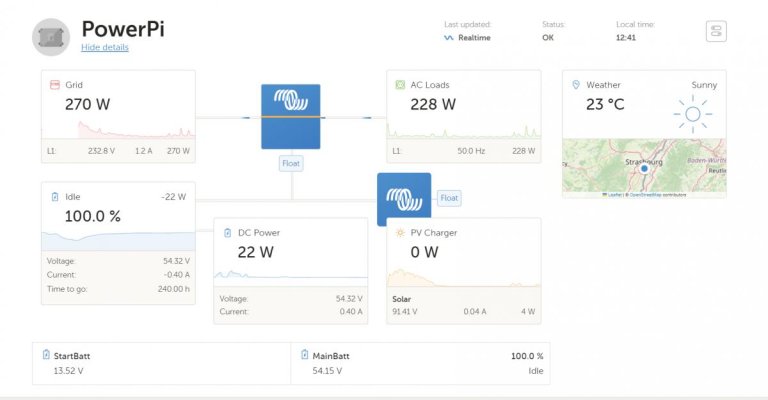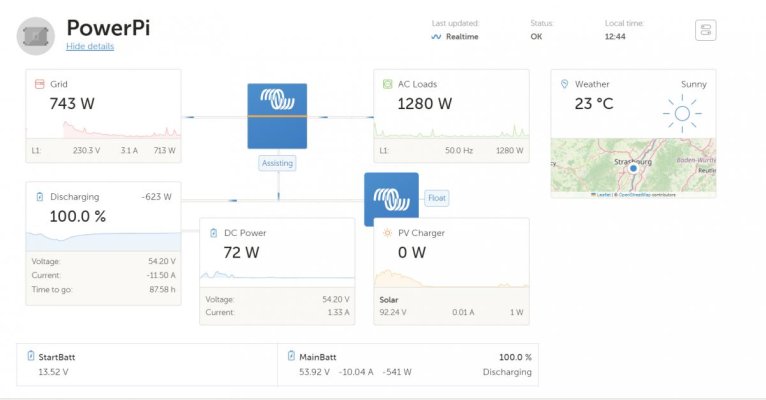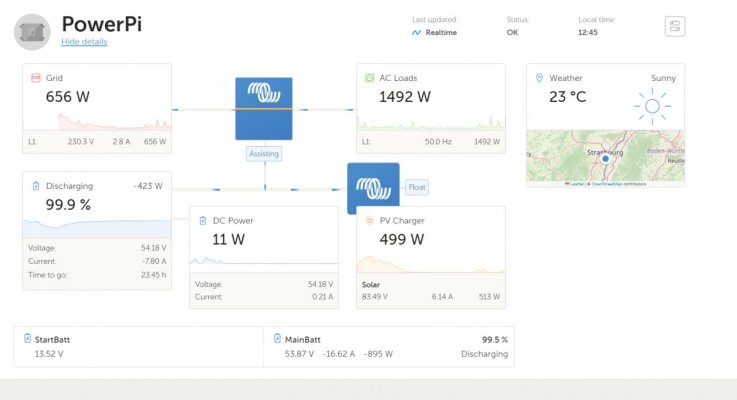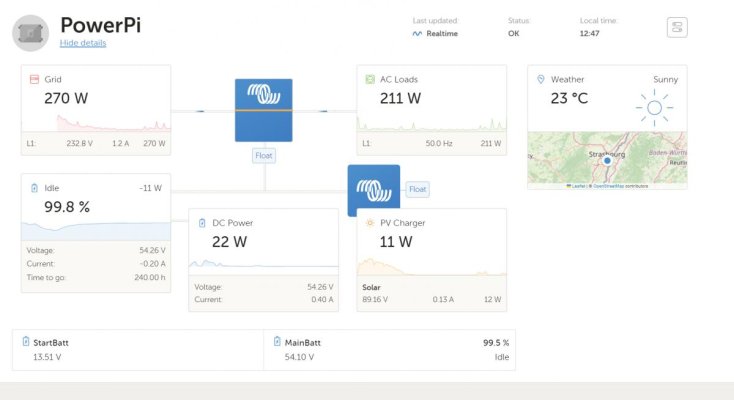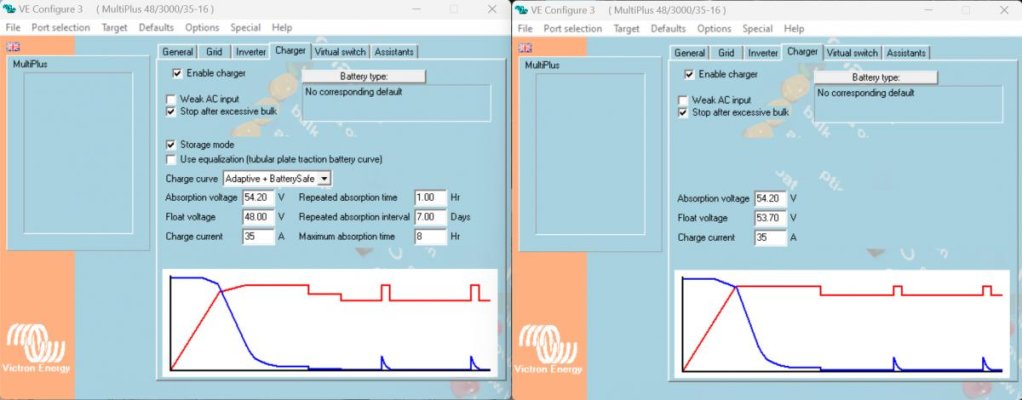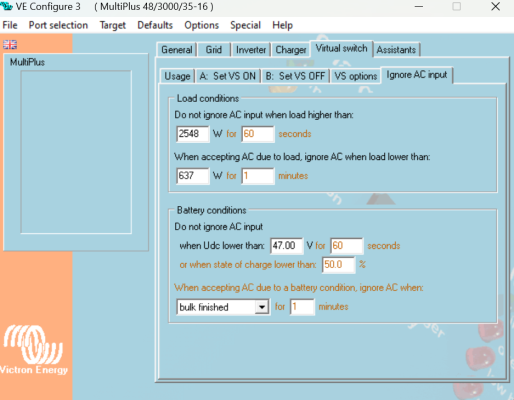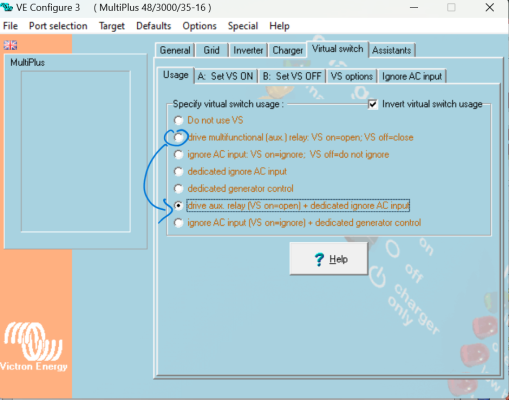ScottC
Guru
- Joined
- Nov 2, 2019
- Messages
- 1,546
- Location
- SWEDEN
- Vessel Name
- ABsolutely FABulous
- Vessel Make
- Greenline 33 Hybrid (2010)
Interesting. It shows that with your panels both string options are doable. Also that you should have been able to get away with a 150/35.
When you look at the history, what's the highest Pmax that you see? Is it near 100% of the rated capacity on any of the days? My best in the last 8 days since fixing is 1124w, divided by the original 1300w and I'm still getting 86% of the original so pretty happy with that.
Main differences you would definitely notice by changing would be:
1. early morning, solar would kick in a bit earlier
2. late evening it will stay longer
3. if you're going under a bridge (issue for me, not so much for you) instead of the voltage dropping low enough to turn off the controller and then needing to wait until it comes back, it now stays on
4. Heavy cloud days where the voltage is marginal and solar doesn't kick in are now usable days
Thanks, Martin!
When not in a marina and living only on battery, on sunny days, my pMax is 95%+. One day, it was even 103% (1860w).
Your point number 4 above would be quite interesting for us after we return to Scandinavia. At this stage, however, I don't see enough benefit to fuss with re-wiring. Anything Victron always seems so configurable -- so it amazes me, frankly, that the MPPT controller can't be configured to be on anyway -- even with lower voltages. I don't see that this configuration is available, even in Expert Mode.
A question for your regarding your point 3 above. When the controller shuts off due to going under a bridge, how long does it take before it turns back on again?

